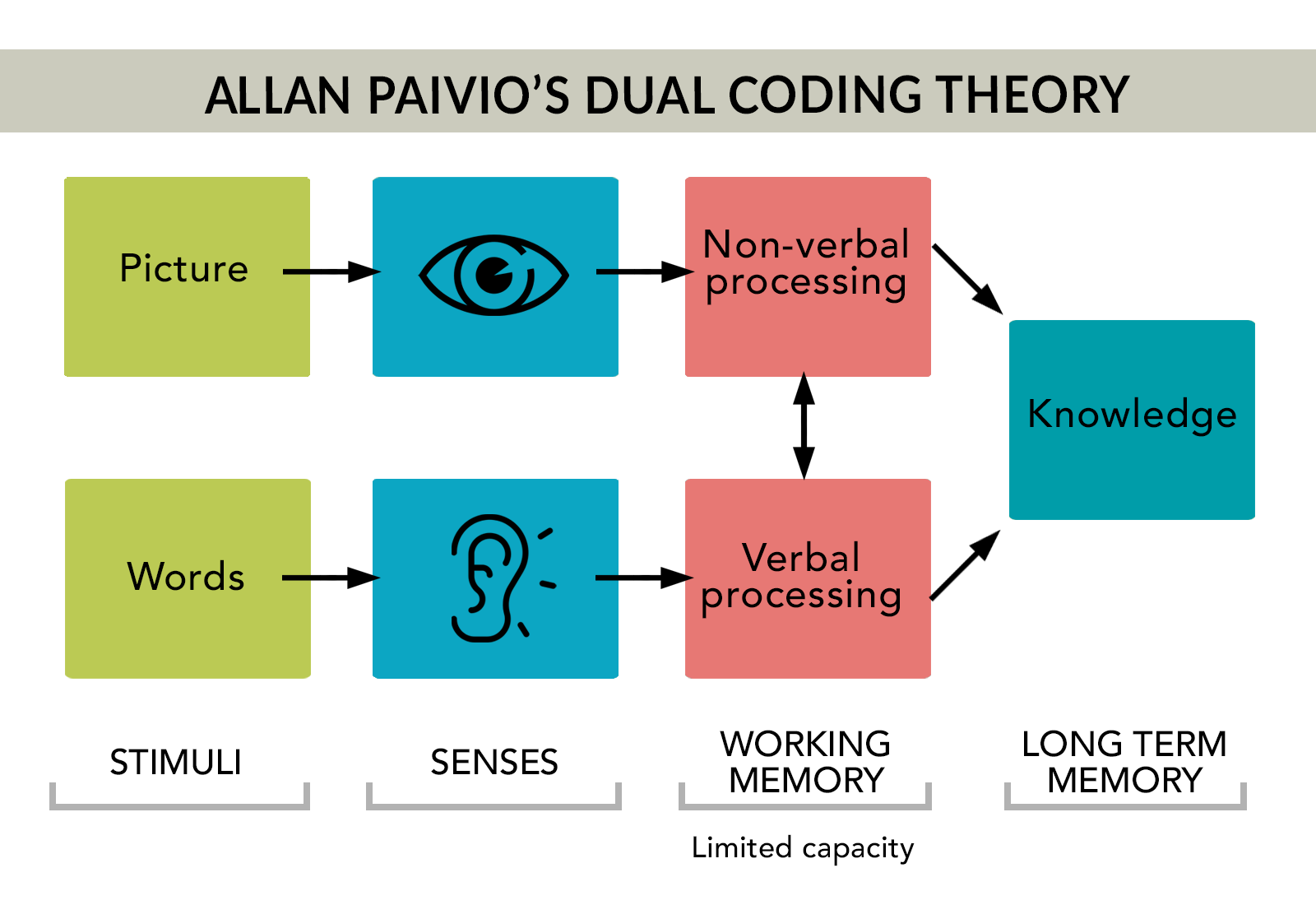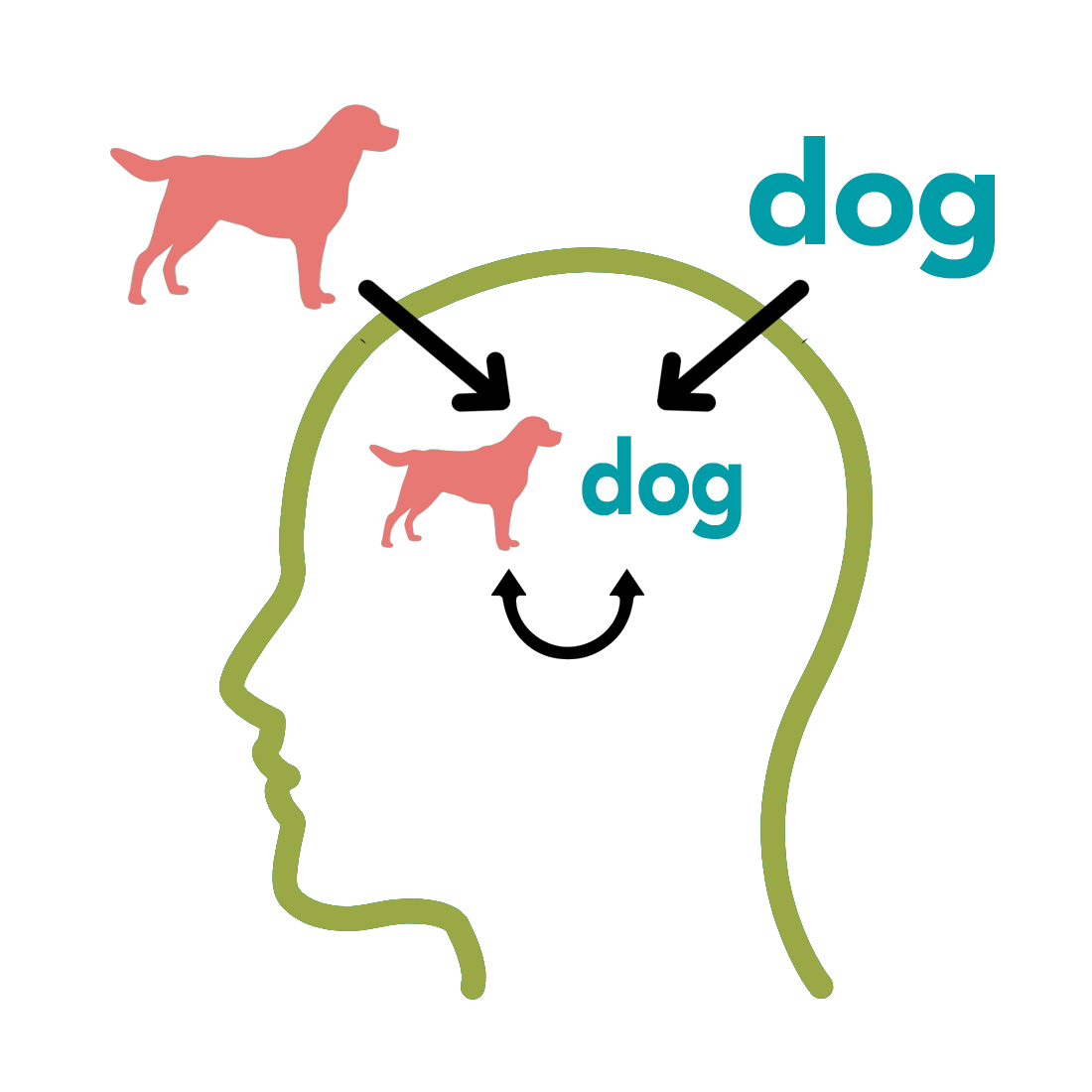


Cognitive science research suggests that for optimal learning to occur, information has to be received and encoded along dual channels – visual (non-verbal) and verbal. What this means for instructors is that in considering how we present information to our learners, it is important to connect verbal (text/words) information with visual stimuli (Dual Coding Theory). Images, when used strategically to augment course content can enhance learners’ ability to consolidate and recall information.
 |  |
|---|
Adapted from Paivio's Dual Coding Theory and Mayer and Moreno, 2003, Cognitive Theory of Multimedia Learning. Dog encoding image credit.
Adding visual imagery to course materials (e.g. illustrations, graphs, infographics, charts, photo essays) can be both strategic and worth the time spent. Below are resources and useful visual tools for you to consider incorporating into your course materials:
References
Dual Code Theory: Science Direct
Hans Rosling TED TALKS: The Best Stats You've Ever Seen -- Inspiring demonstration of the visualization of data using Gapminder tools.
David McCandless TED TALKS: The Beauty of Data Visualization